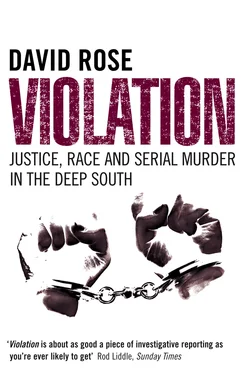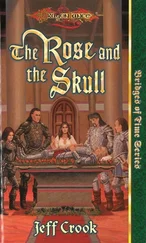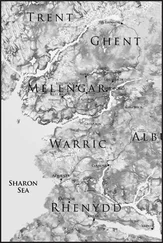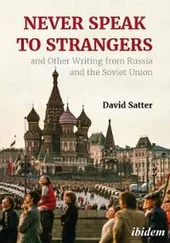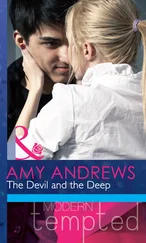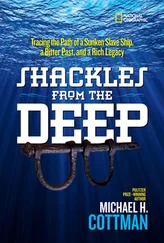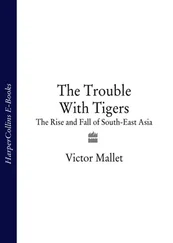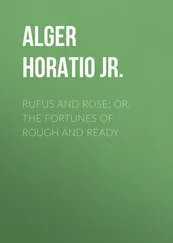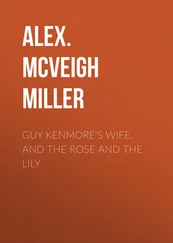Later that day, as the light was starting to fade, I sat on the veranda of a Victorian house on Broadway, in the heart of Columbus’s downtown ‘Historic District’, with George and Vicky Williams, admiring their profligate springtime flowers. The area had once been in steep decline, but years of careful restoration had made it again a highly desirable neighbourhood. The Williamses were the first middle-class black family on their block, but Vicky said they’d encountered little overt prejudice. ‘Most of them just leave us alone.’
George, some twenty years older than his wife, was a highly decorated Vietnam veteran, and since leaving the military had built up several thriving businesses. Vicky had a university degree and worked at Columbus’s huge commercial bank, CB&T. She had lived in Columbus all her life: attended its schools; socialised widely; watched its local TV news and read its newspaper, the Columbus Ledger-Enquirer. How important did she think the Big Eddy Club was in the way the city was run?
Vicky looked at me blankly. ‘What’s the Big Eddy Club?’
Columbus, population a little less than 200,000, is Georgia’s second city, 110 miles south of the state’s capital, Atlanta. Running across it is a racial fissure, a rift with an exact geographical position, its line marked by the east – west thoroughfare known for most of its length as Macon Road. With exceptions unusual enough to be noticeable, white people – about 65 per cent of the total – live to the north, and black to the south. No longer legally segregated, they will mingle at work and use the same stores and restaurants, but in general they do not mix in their social lives, or at home. This de facto segregation still divides other American cities, on both sides of the Mason-Dixon line. But in places like Columbus it tends to be more noticeable. One of its lesser implications is the fact that a well-educated, middle-class black family has never even heard of the fine dining club where their white counterparts take their families for Sunday brunch, marry off their daughters and hold their charity balls; a place where rich and powerful people relax in each other’s company. Unbeknown to George and Vicky Williams, their near neighbours included at least one Big Eddy member, a prominent lawyer.
Columbus stands amid the rolling granite landscape of what, before the boll weevil infestation of the early twentieth century, used to be Georgia’s cotton belt. In summer, the sun irradiates the city with a lacquered intensity for months on end, bringing with it a plague of bugs. Winters are pleasantly mild, although a shift in the wind can bring plummeting temperatures and even, occasionally, tornadoes. The city takes up far more room than its inhabitants need. Its low density has allowed them to cultivate generous, handsome gardens, and there are so many trees that viewed from above, from atop one of the hills on the eastern perimeter, it barely looks like a city at all, but an expanse of forest. At ground level, the foliage turns out to hide a sprawling hinterland of strip malls and snarling expressways, built to connect mazes of suburban subdivisions which on superficial inspection could be almost anywhere in America. Beyond the Victorian downtown enclave, anyone crossing a road on foot takes their life in their hands.
To the west, across the Chattahoochee, is Alabama, here represented by Phenix City, long a centre for gambling and illicit alcohol. In the 1950s the gangs of Phenix City took to murdering elected officials who were trying to clean it up, and it remains the only town in the United States where martial law has had to be imposed in peacetime. Some of those gangsters’ descendants now occupy positions of the greatest respectability in both Georgia and Alabama.
For many Americans, Columbus has a fame and importance out of proportion to its size. It was in his Columbus drugstore during the 1870s that the chemist John Stith Pemberton first mixed the ingredients for his patent soda drink, Coca-Cola. (That original formula is said to have included a stimulating ingredient which is missing from its later versions – cocaine.) To the immediate south of the city lies Fort Benning, the world’s largest infantry base, a place familiar to millions who have served in the military. Its short-haired inhabitants can often be seen in Columbus on weekends, in the dive bars and strip lounges on Victory Drive, a venue for occasional drunken shootings, and with their girlfriends at the motels clustered round the exit ramps on the road to Atlanta, Interstate 185. On my very first night in Columbus, I found myself in the Macon Road Days Inn, where some recent recruits had decided to hold a party in the room above mine. At 3 a.m. it sounded as if they were rounding off their celebrations by repeatedly throwing a heavy refrigerator against the walls and onto the floor. A few hours later, as I blearily went in search of breakfast, there were two used condoms, pale translucent jellyfish, on the concrete stairs.
In Oxford, my English home city, which has a population about two-thirds of Columbus’s, the Yellow Pages phone book entries under the heading ‘Places of Worship’ take up less than a page. In Columbus, they require fourteen, listed under a rich array of denominations: from ‘Churches, African Methodist Episcopalian’ to ‘Churches, Word of Faith’. There are five separate headings to cover the different varieties of Baptist, and seven for Methodists. In Columbus can be found many kinds of Reverend. At the fancy places, such as the imposing neoclassical First Baptist Church of Columbus on Twelfth Street, they are solemn men in silken robes. At the other end of the market is Eddie Florence, a former cop who turned to religion after a short spell in the penitentiary. Dominating his church, deep in South Columbus, on the day of my visit was a drum-kit and electric organ; the premises doubled from Monday to Friday as the office for Florence’s real estate and loans business. A plump, intense, beaming figure, he told me: ‘I don’t suppose you’ve had much opportunity to take out a mortgage from a man of God before?’
For many of Columbus’s citizens, whose behaviour, I learnt, was not always conventionally devout, Church and community are one and the same. If one only knew a person’s choice of place of worship, one would be able to assume much about his or her race, class and social standing. But Columbusites’ faith is no veneer. They give generously to charity, and their routine enquiries after one another’s health appear to express a genuine concern. As I rapidly discovered, their habit is to welcome strangers, even those armed with a notebook and difficult questions.
Its citizens may be oriented towards the world to come, but Columbus, according to Mayor Bob Poydasheff, with ‘its wonderful people and great climate, is simply one of the best places on earth – cosmopolitan but always neighbourly’. The city, states his website, is ‘in a period of unprecedented building and development, which is bringing our quality of life to new highs’. He enumerates its blessings: ‘[The] Chattahoochee Riverwalk, River-Center for the Performing Arts, Springer Opera House, Coca-Cola Space Science Center, Columbus Civic Center, our South Commons Softball Complex including a world-class softball stadium and much, much more.’
The economy, Mayor Poydasheff adds, is buoyant. For more than a century, Columbus has been quietly dominated by a small number of wealthy families. Gunby Jordan, who founded the Big Eddy Club, came from one of them. In 1919, two of these dynasts, Ernest Woodruff and William C. Bradley, bought the Coca-Cola corporation for $25 million. (In Bradley’s case, some of this money was originally derived from his father’s former slave plantation across the river in Alabama.) Their investment was to multiply several thousand times, and spread among their descendants, it has fructified Columbus. Bradley also founded the CB&T banking conglomerate. Its offshoot, the financial computing firm TYSYS, has been quartered since 2002 in a line of large, reflective buildings just north of the former textile district, and is the world’s largest processor of credit cards.
Читать дальше
